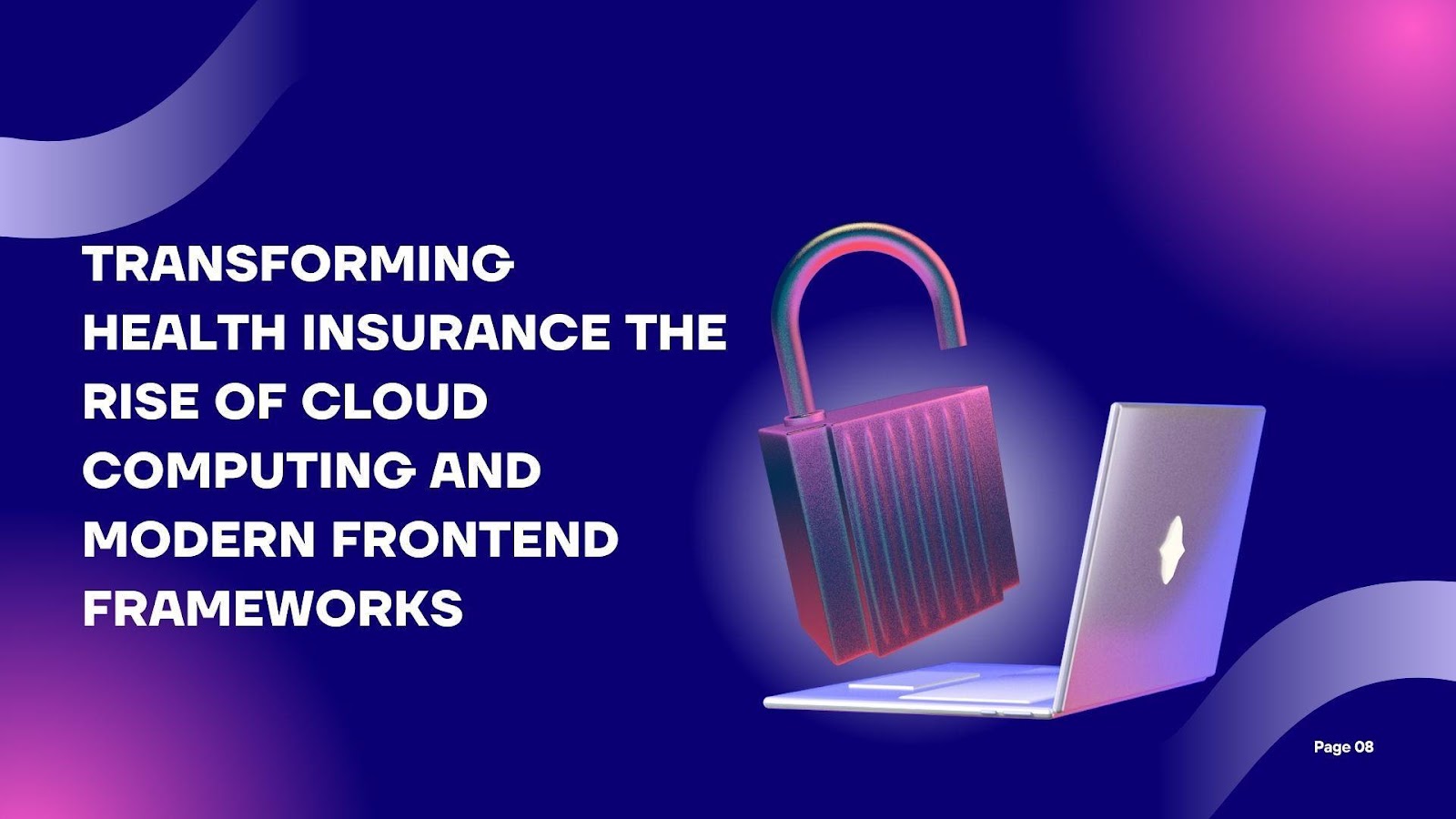In the modern era, digital technologies are revolutionizing industries, and health insurance is undergoing significant transformation. Venkata Raja Ravi Kumar Gelle, a prominent expert in cloud-based solutions, examines the integration of cloud computing with Angular and React frameworks in reshaping the sector. This article explores how these innovations enhance scalability, streamline processes, and improve user experiences, paving the way for a more efficient and accessible health insurance landscape.
A New Era of Cloud-Powered Health Insurance
The integration of cloud computing into health insurance systems marks a significant shift in how insurers manage and process data. Traditional on-premises infrastructure, with its limitations in scalability and cost efficiency, is gradually being replaced by cloud-based solutions. These platforms provide insurers with flexibility, enhanced security, and real-time data access, allowing for seamless operations and improved customer experience.
Cloud computing allows insurers to securely store vast health data while enabling seamless access across multiple platforms. Real-time synchronization ensures up-to-date information for insurers, policyholders, and healthcare providers, minimizing delays in claims processing and improving operational efficiency. This accessibility enhances decision-making, streamlines workflows, and fosters a more responsive health insurance system.
Enhancing User Experience with Angular and React
Modern frontend frameworks like Angular and React are transforming digital experiences in health insurance. Traditionally, complex interfaces made policy navigation and claims filing challenging for users. These frameworks enable insurers to develop dynamic, responsive, and intuitive applications that simplify these processes. By leveraging their capabilities, insurers enhance accessibility, improve engagement, and streamline customer interactions, making health insurance more user-friendly.
These frameworks allow for the development of Single Page Applications (SPAs), reducing page reloads and offering a smooth, app-like experience. Additionally, their component-based architecture promotes code reusability and scalability, ensuring that insurers can easily implement new features without overhauling existing systems. The result is an improved customer experience, where users can access policies, file claims, and receive personalized coverage recommendations with ease.
The Power of AI and Machine Learning Integration
One of the most transformative aspects of cloud and frontend framework integration is the ability to harness artificial intelligence (AI) and machine learning (ML) for predictive insights. Health insurers can analyze claims data, health records, and customer behavior to offer tailored policy recommendations and risk assessments.
With real-time data processing, AI-driven platforms can detect fraudulent claims, expedite approvals, and optimize pricing models based on user history. Intelligent chatbots powered by machine learning further enhance customer support by providing instant responses to inquiries, reducing wait times, and improving engagement.
Security and Compliance in Cloud-Based Health Insurance
As insurers transition to cloud solutions, data privacy and security remain critical concerns. Regulations mandate strict compliance measures to protect sensitive health information from breaches. Cloud service providers implement advanced security protocols, including encryption, multi-factor authentication, and automated monitoring, ensuring that customer data remains protected.
Interoperability between cloud platforms and legacy systems is another challenge insurers must address. Seamless data exchange among healthcare providers, insurers, and policyholders requires robust API integrations and compliance with industry standards. Overcoming these challenges will be key to fully realizing the benefits of cloud-driven health insurance solutions.
Future Trends in Digital Health Insurance
Looking ahead, the integration of emerging technologies such as blockchain and IoT (Internet of Things) is set to further revolutionize the industry. Blockchain enhances transparency in claims processing, reducing fraud, while IoT enables real-time health monitoring to offer dynamic, usage-based insurance models.
The concept of “continuous underwriting”—where policy pricing adapts based on real-time health data—could redefine risk assessment, making policies more personalized and cost-effective. As these technologies mature, insurers will be able to provide even more precise, tailored coverage options to their customers.
In conclusion, the convergence of cloud computing, modern frontend frameworks, and AI is transforming health insurance. By embracing these technologies, insurers can enhance operational efficiency, elevate customer experience, and streamline claims management. While challenges like data security and interoperability persist, their advantages far exceed the obstacles. As innovation progresses, industry leaders like Venkata Raja Ravi Kumar Gelle are spearheading efforts to create more accessible, efficient, and user-focused health insurance solutions, ensuring a future where technology-driven healthcare is seamless and customer-centric.



































